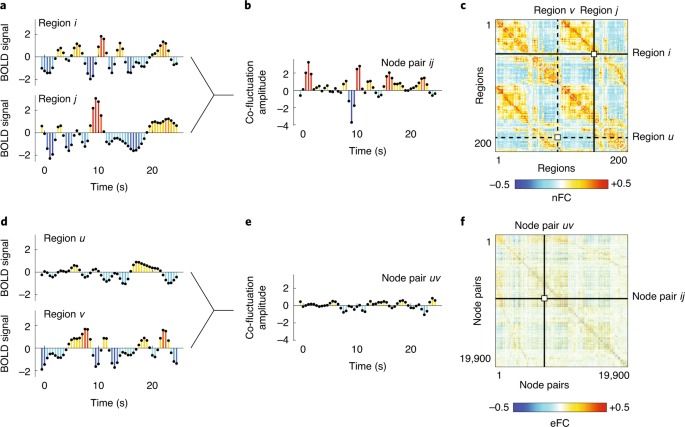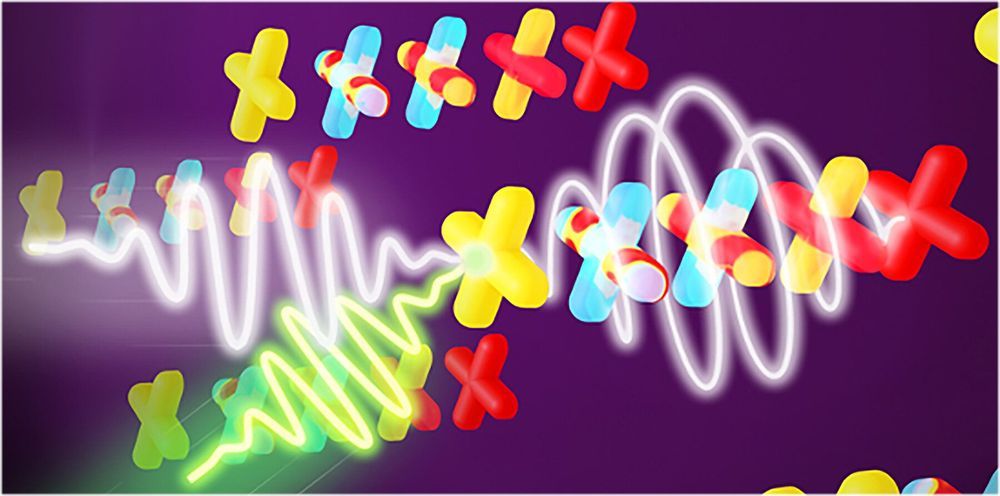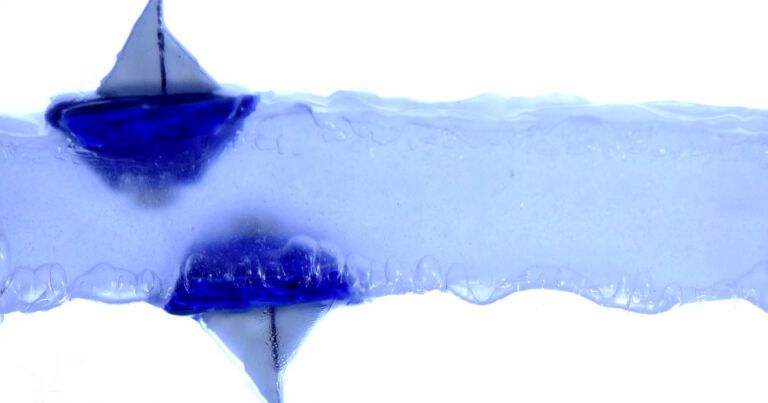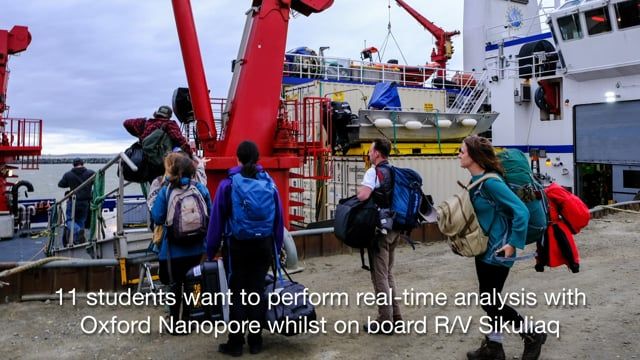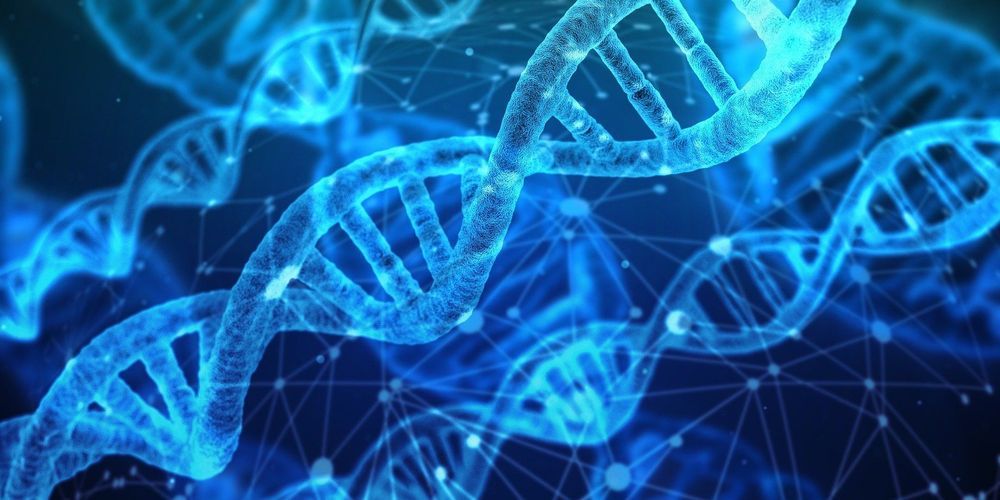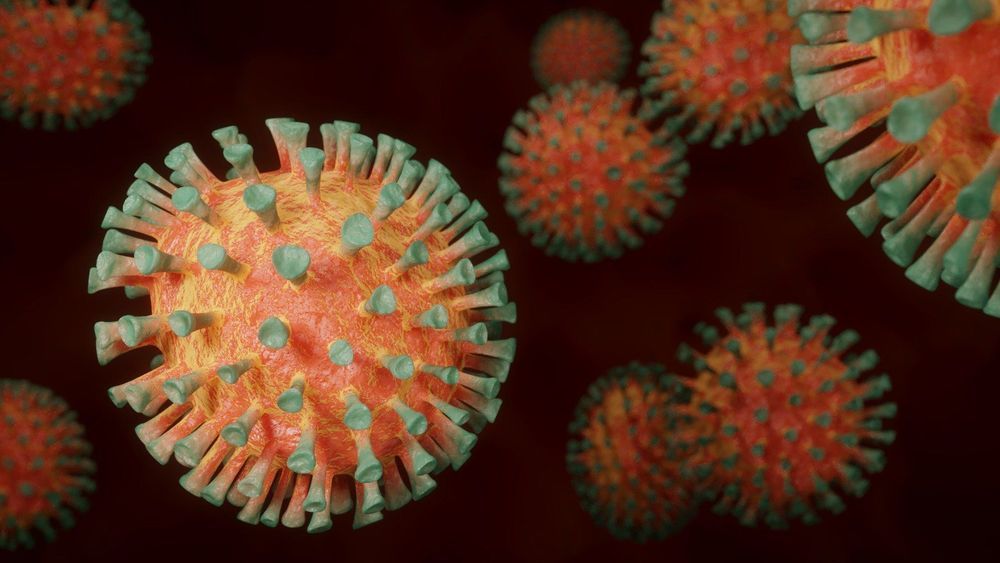The authors present an edge-centric model of brain connectivity. Edge networks are stable across datasets, and their structure can be modulated by sensory input. When clustered, edge networks yield pervasively overlapping functional modules.
U.S. and Italian engineers have demonstrated the first nanophotonic platform capable of manipulating polarized light 1 trillion times per second.
“Polarized light can be used to encode bits of information, and we’ve shown it’s possible to modulate such light at terahertz frequencies,” said Rice University’s Alessandro Alabastri, co-corresponding author of a study published this week in Nature Photonics.
“This could potentially be used in wireless communications,” said Alabastri, an assistant professor of electrical and computer engineering in Rice’s Brown School of Engineering. “The higher the operating frequency of a signal, the faster it can transmit data. One terahertz equals 1,000 gigahertz, which is about 25 times higher than the operating frequencies of commercially available optical polarization switches.”
In this vision of the future, commercial tourists can hop on board a craft and explore suborbital space.
Nokia To Build Cell Network On Moon
Posted in space
The technology will be integrated into NASA’s lunar landers and be used by astronauts for “any activity” they need to carry out.
In a new experiment, a team of French scientists created a levitating fluid that allows a tiny boat to float both on top of it — and another below it, seemingly flipping gravity on its head.
“That was a fun experiment,” Emmanuel Fort, professor at ESPCI Paris and co-author of a paper about the project published today in the journal Nature, told The New York Times. “Everything worked well. And I’m still amazed by the results.”
Portable sequencing is making it possible for biologists to perform DNA analysis anywhere in the world. How is this technology reshaping the way they work?
Thanks to nanopore technology, scientists can now collect samples and sequence them anywhere. It is the concept of backpacking applied to scientific research.
French molecular biologist Anne-Lise Ducluzeau has experienced this first hand during her research in the freezing environment of Alaska. “I remember driving back home with my sequencing station on the passenger seat, it was −20ºF (−29ºC) but the car was warm and reads kept coming,” relates Ducluzeau, who has been using a portable sequencer for her research for the past four years.
Knowing which proteins are key to protection from disease, and the deficiencies in expression or activity that are hallmarks of disease, can inform individualized medicine and the development of new therapies.
Twenty years after the release of the human genome, the genetic “blueprint” of human life, an international research team, including the University of British Columbia’s Chris Overall, has now mapped the first draft sequence of the human proteome.
Their work was published Oct. 16 in Nature Communications and announced today by the Human Proteome Organization (HUPO).
“Today marks a significant milestone in our overall understanding of human life,” says Overall, a professor in the faculty of dentistry and a member of the Centre for Blood Research at UBC. “Whereas the human genome provides a complete ‘blueprint’ of human genes, the human proteome identifies the individual building blocks of life encoded by this blueprint: proteins. ” Proteins interact to shape everything from life-threatening diseases to cellular structure in our bodies.”
A team of New York University scientists has developed a method using holographic imaging to detect both viruses and antibodies. The breakthrough has the potential to aid in medical diagnoses and, specifically, those related to the COVID-19 pandemic.
“Our approach is based on physical principles that have not previously been used for diagnostic testing,” explains David Grier, a professor of physics at NYU and one of the researchers on the project, which is reported in the journal Soft Matter. “We can detect antibodies and viruses by literally watching them stick to specially prepared test beads.”
If fully realized, this proposed test could be done in under 30 minutes, is highly accurate, and can be performed by minimally trained personnel. Moreover, the method can test for either the virus (current infection) or antibodies (immunity).
Leiden chemists Marc Koper and Ian McCrum have discovered that the degree to which a metal binds to the oxygen atom of water is decisive for how well the chemical conversion of water to molecular hydrogen takes place. This insight helps to develop better catalysts for the production of sustainable hydrogen, an important raw material for the chemical industry and the fuel needed for environmentally friendly hydrogen cars. Publication in Nature Energy.
For years there has been a heated debate in the literature: how to speed up the electrochemical production of hydrogen on platinum electrodes in an alkaline environment? Chemist Ian McCrum watched from the sidelines and concluded that part of the debate was caused by the fact that the debaters were looking at slightly different electrodes, making the results incomparable. Time to change that, McCrum thought, who was a LEaDing Fellow postdoc in the group of Professor Marc Koper at the time.
Astronomers at the University of Iowa have determined our galaxy is surrounded by a clumpy halo of hot gases that is continually being supplied with material ejected by birthing or dying stars. The halo also may be where matter unaccounted for since the birth of the universe may reside. Photo courtesy of Christien Nielsen/Unsplash.
